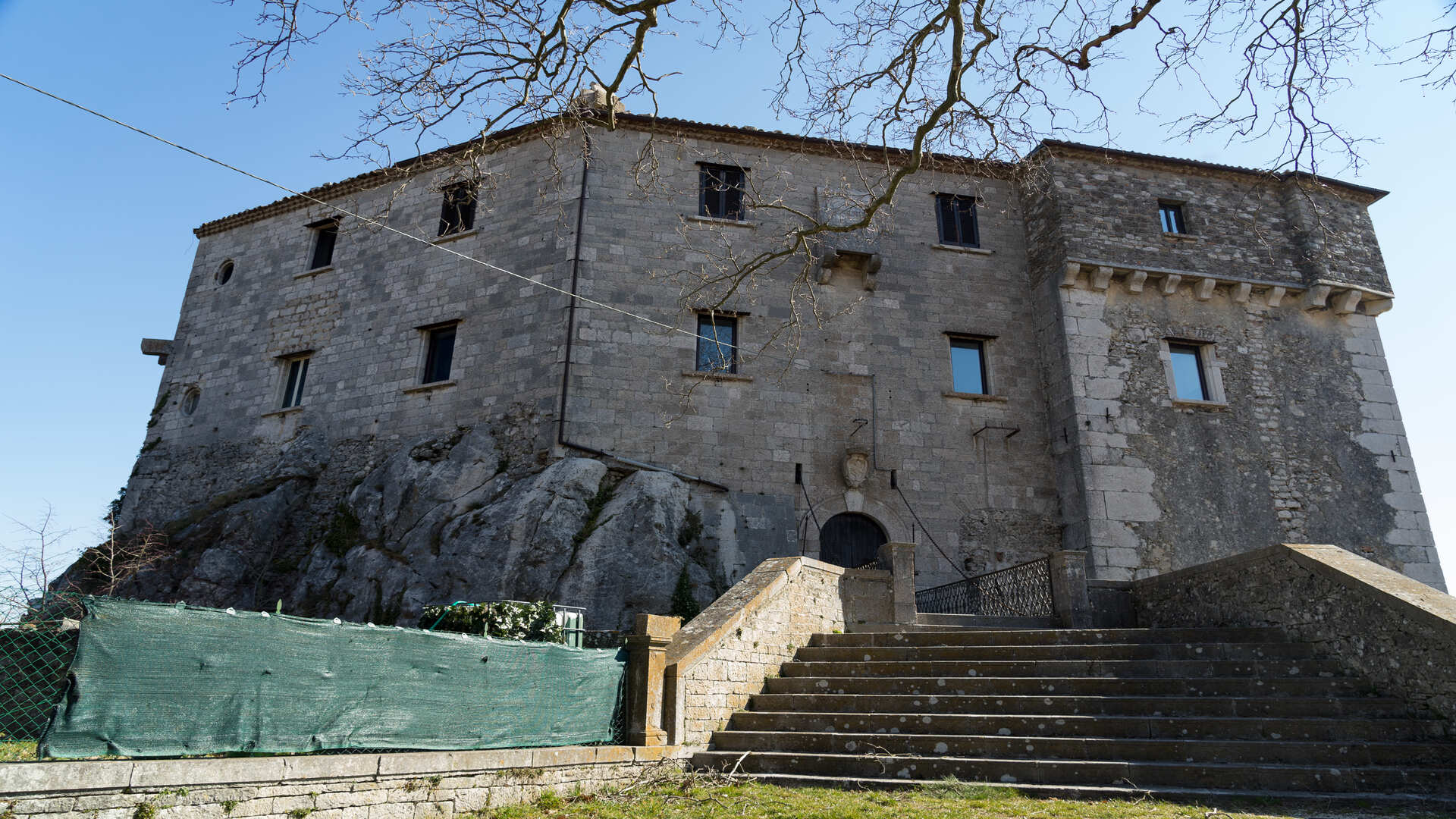The palace-castle, in the actual pentagonal shape, rises on the spur of rock that dominates the valley of the town of Pescolanciano (IS). The original sixteenth-century structure was, at the arrival of the barony of d'Alessandro, formed by several disjointed fortresses, with a small church and a cylindrical tower, as well as an embattled fortress, surrounded by walls. The works of enlargement and unification of the seventeenth and eighteenth centuries, performed by the d'Alessandro, gave the fortress a more definitive conformation of manor placed in defense of the territory and difficult to conquer, given its windows to mouth of fire (still visible on the side slope and walkway) and the drawbridge or the stone to defend the main entrance. The seventeenth-century guardhouse with the respective appurtenances of the warehouses and stables were made together with the flattening and formation of the main courtyard. The original little church remained standing and active until the time of the earthquake, when with the eighteenth-century marbles it was reassembled in the small chapel existing in the fortress structure, already from the date of 1628 (as from the marble entrance portal), to receive some relics of the Holy Martyr Alexander (patron of Brescia) venerated with ancient religious cult of Templar tradition. The mentioned 19th century earthquake also caused the collapse of the part in front of the drawbridge, which was rebuilt in 1849, thus transforming the castle into a noble residence. The recent acquisitions of some apartments owned by the d'Alessandro family by the Province of Isernia and the Molise Region have given way to a plan of works aimed at a desirable structural recovery of the whole building, respecting the principles of conservative restoration and the original functionality of the interested environments, in order to guarantee to the monumental site a worthy flow of visitors".
44 I Luoghi della Storia - Castello D'Alessandro Pescolanciano
Back 44 I Luoghi della Storia - Castello D'Alessandro Pescolanciano

